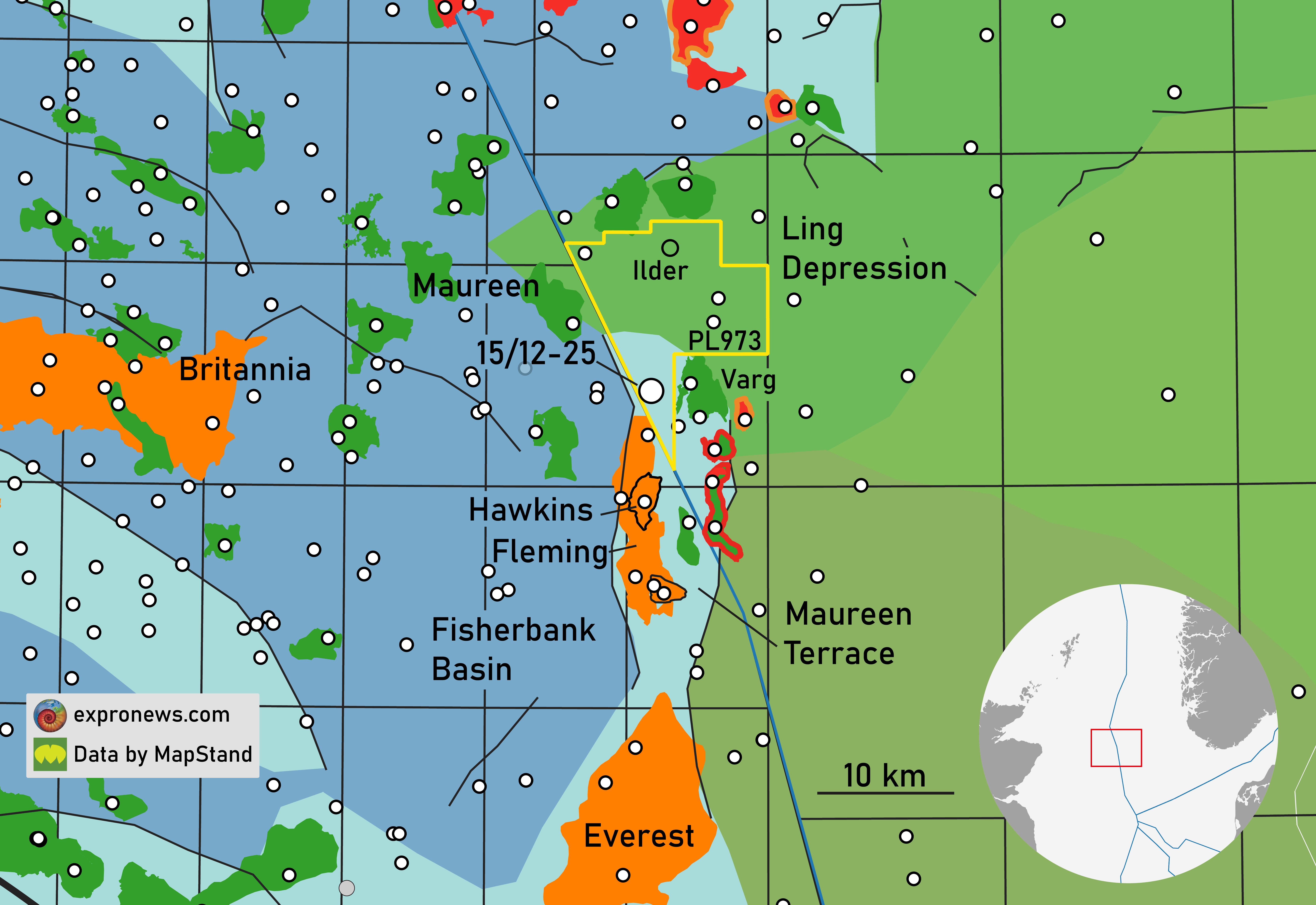Earlier this week we reported on the 15/12-25 (Jerv) well that is currently being drilled in the Norwegian sector. The nice aspect about publishing is that people sometimes get in touch after reading a story, and that happened this week when Niels Arveschoug, CEO of North Sea Natural Resources Ltd, sent a message commenting on the history of the Fleming field just south of the currently drilling well. Here is his account, which puts the currently drilling well into more perspective.
A matter of communication
At the time of discovery in 1987, what is now called the Fleming field, was known as Maggie. Discovered by Phillips Petroleum through 22/04-3 and put on production in 1997, the company was already aware at the time that there was a possible extension of the field in northerly direction – where the current well is drilling.
The Fleming Field in those days was called the Maggie Field (after the late Prime Minister). When PPCo partner BG took over the operatorship from PPco they renamed it Fleming.
Fleming has produced 218 MMboe since it started production in 1997. Production is currently at 3490 boe/d according to the OGA website.
Why didn’t Phillips drill in the area north of Fleming before? Arveschoug, who worked for the company at the time, thinks that it may have been a matter of communication: “The company had a presence in both the UK and Norway, but the two affiliates reported separately to Oklahoma management”. This may have caused the prospect to fall in between the cracks.
“With reporting lines more streamlined at present day, and together with the tax refund brought in by Norway, Chrysaor has been enabled to acquire acreage on either side of the offshore boundary, allowing a more integrated approach with joined up thinking, to be able to push this drilling opportunity over the line,” Arveschoug adds.
Not an exploration well
Because of the near-field nature of the well being drilled, combined with the fact that the northward extension of the field has been known and mapped for decades, Arveschoug makes a case for classifying this well as a low-risk appraisal well instead.
He adds: “With regards to the Fulmar potential, this would increase the cost of the well and would distract from the well design of the main Maureen appraisal purpose. There is undoubtedly Fulmar potential in the area but this is more elusive and challenging to map and would be better targeted in a separate well.”

Depletion the main risk
The main risk for this well is depletion. “The new pressure data that will be acquired will almost certainly prove connectivity with Fleming and also significant depletion. There may even be a 4D effect when comparing different vintages of 3D seismic on the Norway side,” Arveschoug says.
“Any depletion will prove that Fleming Field extends into Norway and may cause a significant readjustment of the mapped extent of the field. The fact that only 600m of it extending into Norway will be proven will lead to a debate about if the northward Norwegian extension undrained volumes justify further development. If successful, the 78% refund on drilling in Norway may well encourage a second appraisal well.”
Pinchout of Maureen
The northward appraisal of Fleming into Norway is very interesting and will be a historic well. The eastern edge of the Fleming accumulation is a pinchout, which wasn’t clearly illustrated in the cross-section in the first article. For that reason, we have updated it, which also allows us to conclude that even in case the Maureen shows more of a gentle westwards dip further north rather than a salt-related anticline, stratigraphic trapping to the east can still account for a valid trap.
Arveschoug is very pleased to see that Chrysaor UK and Norway are now pursuing cross border opportunities: “Being run by management that is in the same time zone as the North Sea operations may also be the key to success!”
Henk Kombrink





